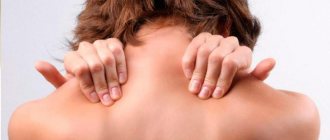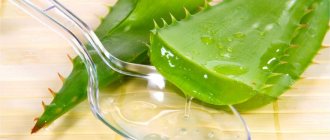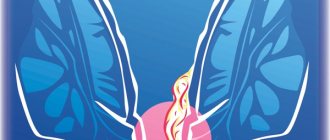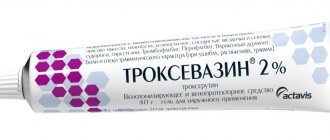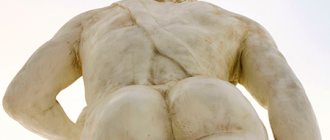Hemorrhoids cause a lot of unpleasant sensations: discomfort in the abdomen, problematic bowel movements, sometimes even accompanied by pain. But this is not the main problem with this disease. The worst thing is that at the initial stage of the appearance of hemorrhoids, symptoms are practically not felt. It is impossible to determine the formation of hemorrhoids externally. Tangible symptoms in the form of itching in the anus, burning, pain, increased body temperature appear only at the 2nd stage of the disease.
When unpleasant symptoms occur, there is a persistent desire to get rid of them by any means. But before using any product, you need to consult a proctologist. One of the effective remedies that a doctor can recommend is Aurobin for hemorrhoids.
Aurobin is an effective treatment method
Aurobin ointment is a glucocorticosteroid. It gives an anti-inflammatory and antibacterial effect when used regularly in accordance with the instructions. The product helps to reduce unpleasant symptoms within a few weeks, and with further use in combination with diet and special gymnastic exercises, it can completely get rid of hemorrhoids.
Aurbin ointment has a light consistency that allows you to apply the medicine in a thin layer
Main components of the drug:
- lidocaine – pain reliever;
- triclosan – a substance against microorganisms;
- prednisolone capronate – a synthetic steroid;
- D-panthenol is an artificial vitamin B5.
The medicine is used exclusively for topical use. Aurobin perfectly relieves inflammation when used regularly. The attending physician can prescribe medication both at the initial stage of the disease and in more advanced forms.
Also, Aurobin ointment for hemorrhoids fights infections well, preventing them from penetrating into wounds and causing infectious inflammation. It has been noted that the active substances help strengthen the walls of weak blood vessels in the rectal area, thereby improving blood flow and reducing stagnation.
Lidocaine is a well-known pain reliever that has been used in medicine for a long time. With hemorrhoids, it is very important to overcome unpleasant symptoms in the form of burning and pain in the anus. Lidocaine, which is part of Aurobin ointment, perfectly helps reduce symptoms.
Panthenol is often used to produce anti-burn agents, to treat frostbitten areas and accelerate the regeneration of other skin lesions. As part of Aurobin ointment, panthenol also helps heal small cracks in delicate tissues.
Triclosan is a substance that destroys fungi and other bacteria. When treating the affected area, triclosan destroys the infection and creates an unfavorable environment for further entry and proliferation of microorganisms.
As auxiliary components in order to give the medicine a pleasant and convenient form of use, manufacturers use glycerol, liquid paraffin, neutral oil, dimethicone, stearic acid, and cetyl alcohol.
Aurobin ointment 20.0g No. 1
Name
Aurobin ointment d/nar.approx. in tubes 20.0 g per pack. No. 1
Description
Homogeneous ointment of white or almost white color, practically odorless
Main active ingredient
Glucocorticosteroid + antimicrobial agent
Release form
Ointment
Dosage
20 g
Pharmacological properties
Pharmacodynamics
Aurobin ointment contains active ingredients that are effective for inflammatory diseases in the anus. Prednisolone is a non-halogenated glucocorticosteroid with local anti-inflammatory activity. In addition, prednisolone reduces vascular permeability, increases the tone of the walls of blood vessels and reduces the symptoms of inflammation. Lidocaine quickly eliminates pain and burning. Panthenol promotes the regeneration of damaged epithelium and mucous membranes.
Pharmacokinetics
No studies have been conducted on the pharmacokinetics of the ointment. Prednisolone Absorption When used topically, prednisolone can be absorbed and thus have a systemic effect (especially when using the drug on the skin under a sealed bandage or on damaged skin, as well as when using ointment for rectal enema). Distribution Prednisolone is rapidly distributed in tissues, binds well to plasma proteins, crosses the placental barrier and can pass into breast milk. Elimination Prednisolone is excreted in the urine in the form of conjugated metabolites. Lidocaine Absorption Lidocaine is well absorbed from the surface of mucous membranes and damaged skin. Distribution Lidocaine overcomes the placental and blood-brain barriers and passes into breast milk. Biotransformation Lidacoin is primarily metabolized in the liver. Elimination Lidacoin binds well to plasma proteins, the half-life is 1-2 hours. Impaired renal function does not affect the rate of elimination of the parent compound, however, in this case, accumulation of the active metabolite may occur
Indications for use
Inflammatory processes in the perianal area, including anal itching, perianal eczema and dermatitis, hemorrhoids, anal fissures.
Directions for use and doses
Doses Adults and elderly people It is recommended to apply Aurobin ointment to the affected area of the body 2-4 times a day. As the severity of symptoms decreases, the ointment can be used less frequently. The duration of therapy should be no more than 5-7 days. Children Aurobin is not intended for use in children under 1 year of age. The use of this drug in children over 1 year of age is possible only in exceptional cases and in the smallest doses sufficient to achieve a therapeutic effect. The duration of treatment should not exceed 5 days. To minimize side effects, the drug should be applied to the affected areas no more than 2 times a day. Directions for use: For topical use only. Regardless of the patient's age, prolonged use or application of the drug to large areas of skin or body folds should be avoided. It is not recommended to apply the ointment to the skin under a sealed bandage.
Use during pregnancy and lactation
Pregnancy Topical use of glucocorticosteroids in pregnant women may cause fetal damage (eg, cleft palate and intrauterine defects). There is insufficient information on the safety of using the drug in pregnant women. Thus, Aurobin ointment should not be used in the first trimester of pregnancy; subsequently, the drug can be used only after a careful assessment of the expected benefits and possible risks. Breastfeeding Glucocorticosteroids and lidocaine pass into breast milk. Glucocorticosteroids may affect adrenal function in newborns and may lead to developmental abnormalities. Small amounts of lidocaine are found in breast milk. Although there is virtually no risk to the baby, great care should be taken when using the drug in nursing women.
Precautionary measures
If skin irritation or tenderness occurs, treatment should be discontinued immediately and appropriate supportive care should be instituted. Local and systemic toxic effects can be prevented by avoiding applying the ointment to large or damaged areas of skin, skin folds, under sealed dressings and for long periods of time. At the site of application of Aurobin ointment, especially in young patients, skin atrophy may develop with prolonged use. In case of fungal or bacterial infections, appropriate local or systemic therapy is necessary. The use of the drug requires increased caution in patients with diabetes, tuberculosis and anemia, as well as in pediatric patients due to the possibility of suppression of the hypothalamic-pituitary-adrenal axis under the influence of the glucocorticosteroid included in the drug. Visual impairment During the use of local and systemic glucocorticosteroids, visual impairment may occur. If blurred vision or other visual disturbances occur, the patient should be referred to an ophthalmologist to evaluate possible causes, which may include cataracts, glaucoma, or rare diseases such as central serous chorioretinopathy (CSC). The listed diseases can occur after the use of local and systemic glucocorticosteroids. Aurobin ointment contains methyl parahydroxybenzoate (E218), cetyl alcohol and propylene glycol (E1520) as excipients. Methyl parahydroxybenzoate (a substance also known as paraben) can cause allergic reactions (possibly delayed). Cetyl alcohol may cause local skin reactions (eg contact dermatitis). Propylene glycol may cause skin irritation.
Interaction with other drugs
Drug interaction studies with Aurobin ointment have not been conducted. Aurobin ointment should not be used when concomitantly using lidocaine for other indications. Should be used with caution in combination with other antiarrhythmic drugs.
Contraindications
- Hypersensitivity to the active substances or to any of the excipients listed in the “Composition” section. - Hypersensitivity to local anesthetics of the amide group (bupivacaine, etidocaine, mepivacaine and prilocaine). — Do not allow the drug to come into contact with the eyes or the skin around the eyes. - Primary bacterial, viral or fungal skin infections (for example, herpes simplex). — Facial rosacea, acne vulgaris, perioral dermatitis, diaper rash, skin tuberculosis, skin manifestations of syphilis, dry fine-plate peeling of the skin. - Simultaneous use of lidocaine for other indications. - Age up to 1 year. — First trimester of pregnancy (see section “Use during pregnancy and breastfeeding”).
Compound
Active ingredients: 1 g of ointment contains 2 mg of prednisolone capronate, 20 mg of lidocaine hydrochloride and 20 mg of dexpanthenol. Excipients: polysorbate 60, triclosan, methyl parahydroxybenzoate, cetyl alcohol, glycerin, propylene glycol, liquid paraffin, macrogol stearate, dimethicone, neutral oil, stearic acid, purified water.
Overdose
Depending on the amount of steroids and lidocaine absorbed, local or systemic manifestations may occur. There is no specific antidote; maintenance therapy is indicated.
Side effect
When glucocorticosteroids are used topically, predominantly local adverse reactions may occur. Depending on the amount of steroids and lidocaine absorbed into the skin, systemic effects may occur. With long-term topical use of glucocorticosteroids or when applying them to large surfaces of the body, suppression of adrenal function may develop. This phenomenon is especially often observed in children and when Aurobin ointment is applied to the skin under a sealed bandage. Protein catabolism can lead to a negative nitrogen balance. Systemic absorption of lidocaine in sufficiently large quantities after topical administration may cause stimulation and/or depression of the central nervous system. The incidence of adverse events has not been established (cannot be determined based on available data). Class of organ systems Undesirable effects Infections and infestations Exacerbation of latent infectious diseases Smoothing out the manifestations of infectious diseases Opportunistic infections Immune system disorders Hypersensitivity reactions Endocrine system disorders Suppression of the adrenal cortex Metabolic and nutritional disorders Hypokalemic alkalosis Fluid retention Hypokalemia Ion retention sodium in the body Mental disorders Insomnia Mental disorders Nervous system disorders Seizures Dizziness Headache Increased intracranial pressure Visual disorders Cataract* Subcapsular cataract Glaucoma Papilledema Corneal ulcer Chorioretinopathy Blurred vision (see also section “Precautions”) Disorders from the heart Heart failure Impaired cardiac conduction Vascular disorders Arterial hypertension Peripheral vasodilation Disorders of the gastrointestinal tract Gastric bleeding Gastrointestinal bleeding Perforation of the gastrointestinal tract Esophagitis Pancreatitis Gastric ulcer Disorders of the skin and subcutaneous tissues Dermatitis Folliculitis (in site of application) Acne-like rashes Contact dermatitis Dryness and thinning of the skin Erythema Urticaria Hirsutism Hyperhidrosis Diaper rash Itching Skin atrophy Hypopigmentation Skin irritation Formation of striae Telangiectasia Burning sensation of the skin Disorders of the musculoskeletal system and connective tissue Steroid myopathy Osteonecrosis Osteoporosis General disorders and disorders at the injection site Delayed wound healing Laboratory and instrumental data Increased intraocular pressure Negative nitrogen balance Delayed reaction in skin provocative tests Children *Children are more likely to develop cataracts. Growth retardation may occur.
Storage conditions
Store at temperatures between +8 °C and +15 °C. Keep out of the reach of children.
Application
Treatment with Aurobin ointment requires four times a day. The drug can be prescribed for both the treatment of internal and external hemorrhoids. The ointment can be used to treat inflamed nodes.
Application of Aurbin suppositories
Aurobin suppositories may be prescribed for insertion into the rectum. Particularly convenient for the treatment of internal hemorrhoids and fissures.
Important! Aurobin ointment should be prescribed by your doctor. The use of this drug may be contraindicated in pregnant and breastfeeding women.
Before prescribing a treatment course, it is important to undergo all necessary diagnostic measures. They are needed for the proctologist to determine the degree of development of the disease and the number of nodes formed. Based on these results, the doctor chooses medications and the duration of their use. The minimum treatment period is regular use of the product for a week, but this treatment is suitable for the initial stage of development.
Advantages of Aurobin over other drugs
An effective combination of substances quickly eliminates symptoms and is often used to prevent recurrence.
Aurobin ointment is sold in a tube; the kit includes instructions describing the drug and method of use.
The medicine has the following advantages:
- ease of use;
- rapid anti-pain effect;
- elimination of such unpleasant symptoms as itching and burning in the shortest possible time;
- excellent absorption of the ointment;
- elimination of swelling in affected areas;
- elimination of inflammation;
- improved blood circulation;
- increasing local immunity.
Note! When using this product, oily discharge from the anus is possible. It is recommended to use thick underwear.
Treatment of dermatitis
Treatment of dermatitis is a whole range of measures, including therapeutic and physiotherapeutic procedures with the prescription of general and local medications (creams, ointments). The main goal of therapy is to eliminate disturbing symptoms (itching, burning, rashes) and prevent secondary infections. Overall success in treatment is possible only with strict adherence to medical recommendations.
Dermatitis must be treated individually in each specific case. Sometimes it is enough to eliminate contact with the irritant. In difficult cases, drug therapy is selected with the prescription of local agents and antihistamines.[3]
Contraindications
Aurobin ointment may be contraindicated in the simultaneous treatment of the following diseases:
- syphilis;
- dermatomycosis;
- tuberculous rash in the anal area;
- herpes rash in the rectal area;
- some forms of dermatitis;
- rosacea.
Also, the drug is not prescribed under the following circumstances:
- vaccination period;
- presence of Cushing's syndrome;
- pregnancy, especially the first trimester;
- children's age up to 1 year.
When treated with this ointment, despite the presence of contraindications, an allergic rash and increased itching in the treated area may appear. Treatment with this drug may be okay for some people, but should be done with caution:
- children's age from 1 year;
- diabetes;
- cataract;
- low hemoglobin level;
- glaucoma;
- heart disease;
- kidney and liver diseases;
- reduced immunity;
- HIV infection;
- AIDS.
If the product is used only for its intended purpose and in accordance with the recommendations of the proctologist, hemorrhoids soon cease to cause discomfort, and after completing the treatment course, congestion in the vessels resolves and the nodes disappear.
Suppositories, according to reviews, are much more convenient to use than ointment in the treatment of internal hemorrhoids
More information about proper treatment
The ointment is used up to 4 times a day. Before applying to the affected area, it is important to carry out hygiene procedures to clean it of contaminants. When the symptoms decrease, you can reduce the number of treatment procedures to 1-2 times a day.
Advice. With hemorrhoids, it is important to adhere to hygiene of the perineum and anus to prevent infection from entering the inflamed area. Therefore, it is recommended to rinse these areas after each bowel movement.
Aurobin is also available in suppository form. Before placing the suppository into the anus, it is necessary to lightly moisten it with water to dissolve the surface layer. Then you need to take a horizontal position and administer the medicine. After the treatment procedure, you must wash your hands thoroughly with soap.
Therapeutic aspects of hemorrhoid treatment
For many decades, hemorrhoids have been and remain a pressing medical problem. This is due to the widespread prevalence of the disease - hemorrhoids and its complications are the cause of 40% of visits to a surgeon or proctologist, a significant decrease in the quality of life of such patients, and an increase in the total number of days of disability.
The first scientific definition of hemorrhoids was given in the 18th century, when cavernous plexuses were discovered, formed during normal embryogenesis in the submucosal layer of the distal part of the rectum. However, only in the middle of the last century did foreign and domestic scientists establish that hemorrhoids are the result of impaired hemodynamics and an inflammatory process in the vessels of the hemorrhoidal plexuses, which is accompanied by thrombosis, varicose veins, as well as sclerosis of the veins and is often complicated by bleeding.
Etiology and classification of hemorrhoids
Despite the fact that a significant number of studies have been devoted to the problem of hemorrhoids, the etiology of this disease is still not fully understood. Currently, great importance is attached to hereditary factors, in particular genetically mediated incompetence of vascular connective tissue and mesenchyme in general [5, 6].
Factors contributing to the appearance and development of hemorrhoids are:
- constipation, which occurs in more than 75% of patients;
- venous circulation disorders in the lower half of the body, developing with prolonged standing, sedentary lifestyle, obesity, bronchial asthma;
- dysfunction of the rectum, causing spasm of the internal sphincter (psycho-emotional disorders, adhesive disease);
- disruption of portosystemic blood flow due to alcohol abuse, fatty foods, and the use of certain medications;
- chronic inflammatory diseases of the anorectal zone and pelvic organs (bacterial salpingoophoritis, prostatitis, cystitis), leading to inflammation of vascular formations, hemodynamic disturbances and lymphogenous spread of infection into the hemorrhoidal plexuses;
- pregnancy.
Depending on the location of hemorrhoids, internal hemorrhoids are distinguished, in which the nodes are located inward from the dentate line of the anal canal, and external, with the nodes located distal to it. A combined form of the disease is often encountered.
The course of hemorrhoids can be acute or chronic. There are four degrees of severity of hemorrhoids:
I degree - swollen, sometimes bleeding, captive hemorrhoids; II degree - prolapsed nodes are reduced independently; III degree - prolapsed hemorrhoids can be reset only by manual manipulation or instrumentally; IV degree - prolapsed hemorrhoids cannot be reduced.
Typical locations for hemorrhoids are the left lateral, right anterior and right posterior walls of the anal canal.
Clinical picture and diagnosis
Hemorrhoids affect people of any age, and men and city residents who lead a sedentary lifestyle are more likely to suffer from hemorrhoids.
The clinical picture of hemorrhoids is characterized by a triad of symptoms, including pain, bulging of hemorrhoids due to thrombosis and inflammation in the node itself and surrounding tissues, as well as bleeding.
Pain during bowel movements and emptying the rectum is most often associated with thrombosis of the internal hemorrhoid or anal fissure. Discharge from the anal canal in acute hemorrhoids is a consequence of the inflammatory process and is a mucous or inflammatory substance. They can cause a feeling of wetness, which leads to anal itching and scratching of the skin of the perianal area.
Bleeding from hemorrhoids usually occurs after or during a bowel movement and rarely leads to significant blood loss and anemia. It should be remembered that the symptoms of colon diseases are quite monotonous and bleeding can be a sign not only of hemorrhoids, but also of malignant neoplasms, polyps, ulcerative colitis and Crohn's disease [4]. In case of bleeding associated with damage to the perianal area, the released blood (in the form of traces on toilet paper or drops falling on the walls of the toilet) is usually not mixed with feces, which in such cases retains its inherent brown color. If the source of bleeding is located proximal to the rectosigmoid colon, then the blood is more or less evenly mixed with the stool, so that it is usually not possible to identify its normal color.
To make a correct diagnosis, it is imperative to carry out not only an examination of the perianal area, but also a digital examination of the rectum and anoscopy or sigmoidoscopy to a level of 15-60 cm above the anus. At the slightest suspicion of a neoplasm and detection of multiple polyps in the colon, a colonoscopy or irrigoscopy is performed.
Thus, the diagnostic criteria for hemorrhoid decompensation are [1, 8]:
- anorectal bleeding;
- characteristic pain syndrome;
- bulging hemorrhoids;
- unusual rectal discharge;
- swelling and pathological sensations in the perianal area;
- dissatisfaction with the act of defecation.
Treatment
The main methods of treating hemorrhoids today are [1, 2, 3]:
- radical hemorrhoidectomy (open, closed, closed circular stapler, submucosal);
- minimally invasive treatment methods (ligation of nodes with rubber strips, sclerotherapy, direct current electrocoagulation, coagulation with infrared rays, cryotherapy);
- conservative treatment.
When choosing a tactic and method of treating hemorrhoids, it is necessary to take into account the location and severity of the disease, the presence of complications, the severity of pain, the severity of the patient’s general condition and the degree of his disability, as well as the patient’s plans for treatment.
Currently, according to most literature sources, conservative therapy, which is justified in 20-45% of cases, is an effective and appropriate method of treating hemorrhoids [5]. A clear confirmation of this is the fact that the number of surgical hemorrhoidectomies in the United States decreased from 165,000 in 1982 to 30,000 in 1994 [6, 7].
Indications for conservative treatment are mild and moderate hemorrhoids, severe hemorrhoids of any location that occur during pregnancy, as well as the impossibility of surgical treatment for other reasons.
The most important conditions for successful treatment and prevention of subsequent exacerbations of the disease are normalization of the digestive tract, regulation of the consistency of intestinal contents and its transit through the colon. For this purpose, a diet rich in plant fiber is prescribed along with regular and sufficient consumption of water and osmotically active nutrients, such as fruit and vegetable juices. As a source of dietary fiber, or, as they are also called, hydrophilic colloids, in our country wheat bran, seaweed and flaxseed are traditionally used in their natural form or in the form of pharmacological preparations. Abroad, psyllium seeds and husks and flaxseed are more often used, which form the basis of such drugs as agiolax, fiberlax, nutriclinz, which have a high water-holding capacity. In the system of treatment and preventive measures, a significant role is given to the correction of emotional disorders, cessation of smoking and consumption of alcohol, drugs, coffee, and increasing the physical activity of patients.
Pharmacotherapy as the main component of conservative treatment of hemorrhoids has several goals:
- pain relief;
- elimination of the inflammatory process;
- elimination of hemorrhoidal thrombosis;
- relaxation of the internal sphincter of the rectum;
- normalization of microcirculation in the affected area.
Just a few years ago, the arsenal of drugs available to help achieve these goals was minimal, limiting choice. Nowadays, the abundance of remedies used for hemorrhoids, on the contrary, has given rise to the opposite problem: which one to choose in each specific case. To do this, it is necessary to know the mechanisms of action of drugs and those aspects of pathogenesis that they should influence.
Planned conservative therapy includes:
- painkillers;
- thrombolytic agents;
- antibacterial therapy;
- laxatives;
- physiotherapy;
- drugs that help stop straining during bowel movements.
Drug therapy for hemorrhoids can be local (ointments, creams, gels, rectal suppositories) or general (systemic).
To eliminate pain, combined painkillers in the form of gels, ointments and suppositories are used. The most widely used drugs are aurobin, ultraproct, and procto-glivenol. It should be noted the effectiveness of new painkillers - nefluan and emla, which are characterized by high concentrations of lidocaine and neomycin. The use of a short course of systemic non-narcotic analgesics is justified only for severe and complicated hemorrhoids. Prescribing narcotic analgesics is not advisable, since these drugs significantly increase the tone of the internal sphincter of the rectum and make defecation difficult.
Anti-inflammatory therapy is based on the use of fast-acting glucocorticoids, in particular prednisolone. For hemorrhoids, preference should be given to local treatment, since it does not interfere with tissue repair, is accompanied by minimal resorption and a low risk of systemic action of glucocorticoids. However, local treatment is contraindicated for viral, fungal and other specific lesions of the rectum and anorectal area. In these cases, nonsteroidal anti-inflammatory drugs with a combined effect (ketoprofen, diclofenac, indomethacin) are used.
Thrombosis of hemorrhoidal vessels, especially complicated by their inflammation, is an indication for the use of combination drugs containing analgesic, thrombolytic and anti-inflammatory components. This group of drugs includes proctosedyl, procto-glivenol, hepatrombin G, produced in the form of ointments, gels and suppositories. The preference for prescribing the latter drug is explained by the fact that it contains the three most active components of the pathogenetic treatment of hemorrhoids: heparin, polidocanol and prednisolone. Heparin, by binding plasma coagulation factors and having an inhibitory effect on hemostasis, has a thrombolytic effect; polidocanol provides an analgesic effect; prednisolone is anti-inflammatory. In addition, the drug contains panthenol, which stimulates metabolic processes, granulation and epithelization of tissues. Rectal suppositories Gepatrombin G are administered into the rectum after bowel movements 1-3 times a day. Gepatrombin G ointment is advisable to use for external hemorrhoids. The course of treatment with hepatrombin G is 1-2 weeks. The advantages of the drug are the extremely rare development of side effects and the possibility of use during pregnancy due to the minimal systemic effect. According to G.I. Vorobyov, rapid subsidence of pain was noted in 87% of patients who underwent treatment; reduction of thrombosis and inflammatory processes - in 91% of patients [2].
Local anticoagulants are widely used in the treatment of hemorrhoids. In addition to the above-mentioned hepatrombin G, this group of drugs includes heparin and troxevasin ointment, nigepan. Medicines containing heparin are the drugs of choice for acute thrombosis of hemorrhoids, but they are quite effective for any form of hemorrhoids. When prescribing locally acting heparin-containing drugs, complete resorption of thrombotic masses occurs no earlier than 4-8 weeks from the start of therapy, which must be taken into account when developing treatment tactics. A relative contraindication to local treatment with heparin is disorders of the blood coagulation system.
In 70-80% of cases, the inflammatory process spreads to the subcutaneous tissue and perianal area. In these cases, drugs containing heparin are used in combination with water-soluble ointments that have a powerful anti-inflammatory effect, such as levosin, levomekol, mafenide.
The basis of hemorrhoid therapy is the use of phlebotropic drugs that increase the tone of the veins, improve microcirculation in the cavernous bodies and normalize blood flow in them. This problem can be solved with the help of drugs such as escin, tribenoside, troxerutin, as well as new generation drugs: detralex, cyclo-tri-forte, ginkor-forte, endothelon.
According to most experts, the most effective drug in this group is Detralex. Its use leads to relief of pain in 83% of cases, reduction of prolapse of nodes in 81% of cases, and reduction of bleeding in 91% of cases. In the group of patients taking Detralex, there was a 2-fold reduction in the frequency of use and a 2-fold reduction in the dosage of non-narcotic analgesics, a 2.2-fold reduction in the incidence of annual exacerbations, a 2-fold reduction in the duration of exacerbations, and a 1.5-fold reduction in the overall average severity of exacerbations [2 ].
For intestinal bleeding, a laxative diet, taking a 10% solution of calcium chloride orally, and introducing suppositories with novocaine, belladonna extract and epinephrine into the rectum are indicated. You can use suppositories containing adrenaline. In addition, local hemostatic materials such as adroxon, beriplast, tachycomb, spongostan, consisting of fibrinogen and thrombin, are used. When introduced into the anal canal, they dissolve, forming a fibrin film that blocks the bleeding areas of the hemorrhoids.
An important role in the conservative treatment of hemorrhoids is given to drugs that reduce straining and cause easier bowel movements. For this purpose, laxatives with emollient and osmotic effects are prescribed: psyllium, lactulose and macrogol. To relax the internal sphincter of the rectum, ointments and creams containing nitroglycerin, isosorbide dinitrate, nifedipine, as well as suppositories containing belladonna extract are used [1, 4, 6].
Local anti-inflammatory and fibrinolytic treatment, as well as regulation of the tone of the internal sphincter of the rectum, as well as measures aimed at facilitating defecation, do not lose their relevance even after surgical treatment, since they not only contribute to the rapid rehabilitation of the patient, but also prevent the development of scars and dystrophic diseases skin of the anorectal area, strictures, fissures and rectal incompetence.
Literature
- Vovk E.I. Rational pharmacotherapy is a factor in the successful treatment of hemorrhoids // Breast Cancer. 2002. T.10. No. 2. pp. 73-77.
- Vorobyov G.I., Shelygin Yu.A., Blagodarny L.A. Conservative therapy of acute hemorrhoids // Consilium medicum. Application. 2001. pp. 32-34.
- Datsenko B. M., Druzhinin E. B., Protsenko A. G. Hemorrhoids: principles of treatment and diagnosis // Kharkov Med. magazine. 1995. No. 3-4. pp. 43-46.
- Rivkin V.L., Kapuller L.L., Dultsev Yu.V. Hemorrhoids and other diseases of the anal canal // M.: Medicine, 1994. 143 p.
- Brisinda G. // BMJ 2000. Sep. 9; 321 (7261). R. 582-583.
- Bruch HP, Roblick UJ // Chirurg. 2001. Jun; 72(6). R. 656-659.
- Metcalf A. Anorectal disorders. Five common causes of pain, pain and bleeding // Postgraduate Medicine Univ. Jova Hospital and Clinic. 1995. R. 221-228.
- Otto P., Otto J., Kisbi K. Haemorrhoids: a clinical update // Med. J. Austria, 1997. 167. R. 85-88.
Note!
- Hemorrhoids and their complications are the cause of 40% of visits to a surgeon or proctologist, as well as a significant decrease in the quality of life of patients.
- Hemorrhoids affect people of any age, and men and city residents who lead a sedentary lifestyle are more likely to suffer from hemorrhoids. The clinical picture of hemorrhoids is characterized by a triad of symptoms, including pain, bulging of hemorrhoids due to thrombosis and inflammation in the node itself and surrounding tissues, as well as bleeding.
- Indications for conservative treatment are mild and moderate forms of hemorrhoids, as well as severe hemorrhoids of any location that occur during pregnancy, or the impossibility of surgical treatment of hemorrhoids for other reasons.
- When choosing a tactic and method of treating hemorrhoids, it is necessary to take into account the location and severity of the disease, the presence of complications, the severity of pain, the severity of the patient’s general condition and the degree of his disability, as well as the patient’s plans for treatment.
Analogs
If there are contraindications or individual immunity to the drug, the attending physician selects another remedy.
The Aurobin analogue can be selected from the following options:
- Agiolax is a drug made from plant components. Available in powder form for oral administration.
- Proctosedyl is prescribed only in the acute form of the disease; it is not recommended to use it for prophylactic purposes or for longer than prescribed by the doctor.
- Proctosan - consists of painkillers and healing substances. Treatment with this drug can be extended up to a month.
- Gepazol is a combined potent agent in the form of an ointment. Treatment lasts about a week.
If a decrease in symptoms is not noticed within a week, it is recommended to inform your doctor.
Proxedil is one of the analogues of Aurbin ointment
Reviews
Victor Over the past few years I have been seriously involved in bodybuilding. The last couple of weeks I began to feel discomfort in the anus. I decided not to wait for miracles and went to a proctologist for an examination. The doctor diagnosed the first stage of internal hemorrhoids. I prescribed Aurobin ointment for treatment. I did not like using the ointment - the smell is quite specific, and it is difficult to introduce the required amount of medicine into the anus. I decided to read more about using Aurobin on the Internet. It turned out that it is also produced in the form of candles, reviews spoke of their effectiveness. I liked this option better. Now I use it at night every day. Several days have already passed, and the severe pain has passed. I hope for a full recovery.
Anna After giving birth, I had some complications. The doctor prescribed Aurobin in the form of suppositories. The medicine has an affordable price - up to 300 rubles - and has proven to be quite effective. I use it for prevention purposes.
Ivan I work in an office, which means constantly sitting at a computer. I travel from and to work by car, and relax by sitting on the couch in front of the TV. I never thought about additional physical activity. And the result of my sedentary lifestyle was hemorrhoids. At first I didn’t pay attention to the rare signs of discomfort. But over time, the pain became stronger and more frequent. On the advice of the pharmacist, I bought various rectal suppositories and ointments, but the effect did not last long. Soon the pain began to cause severe discomfort, even walking became difficult. I had to see a proctologist. It turned out that hemorrhoids were in an advanced stage. The doctor recommended Aurobin ointment. There were doubts, because so many remedies had been tried, and the contraindications were alarming. But still there was nowhere to go. I bought it and started treatment. After 3 days there was practically no pain, the nodes began to shrink. I was afraid to use it for a long time; after all, it’s a hormonal drug. After a week I stopped using it, but the nodes resolved during the period of therapy. I was pleased with the result.
Types of dermatitis and diagnosis
Depending on the causes of manifestation and the nature of the course, the following types of dermatitis are distinguished:
- simple contact;
- allergic;
- allergic contact;
- seborrheic;
- atopic.[1]
Diagnosis of dermatitis is based on examination of the patient and laboratory tests, including a general blood and urine test, a biochemical blood test, an immunological blood test to determine the level of Ig E, which makes it possible to determine the allergic nature of the disease, and allergy skin tests. Based on the research results, the doctor will be able to assess the picture of the disease and select an effective treatment regimen. In some cases, allergists, infectious disease specialists, and immunologists are invited for consultation.[2]



